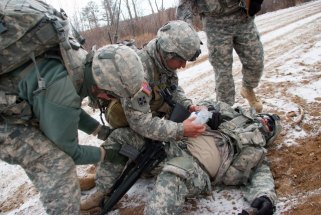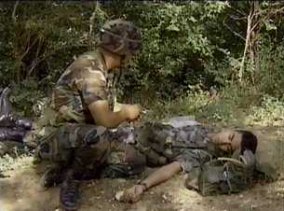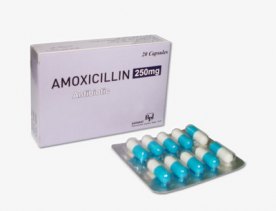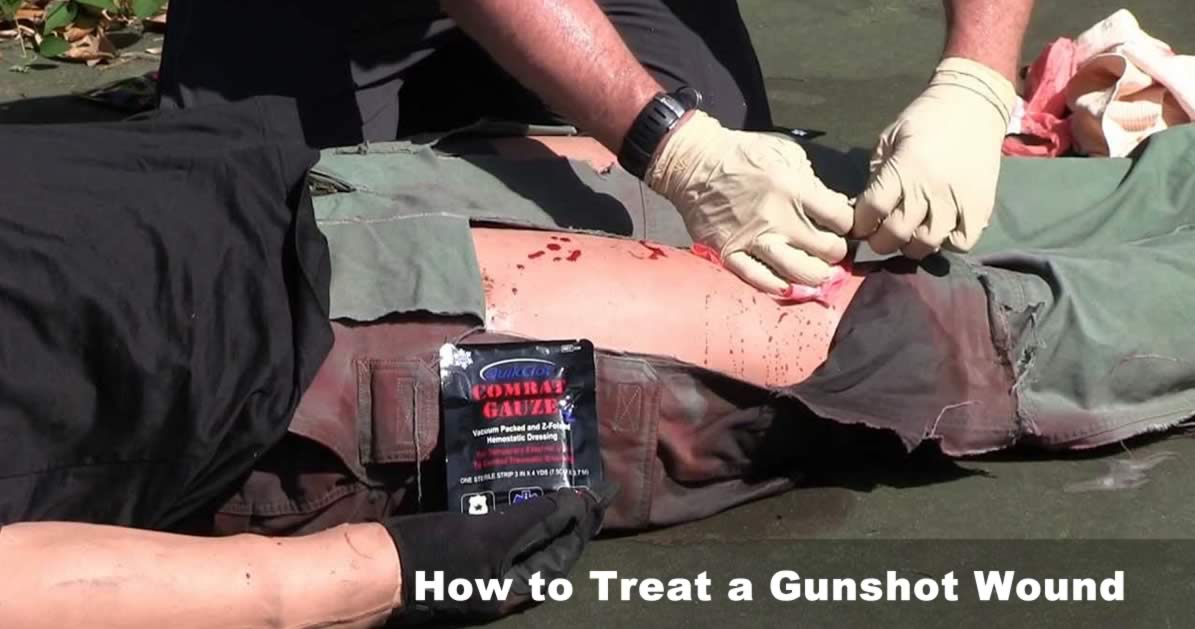How to Treat a Gunshot Wound Yourself
As a gunsmith and competitive shooter, I know a lot about firearms but I have never been in a firefight. Not knowing about gunshot wound treatment in the event I am in one and someone I care about is hit scared the hell out of me and prompted me to write this article.
In the event someone in your party is struck by a bullet, priority is SAFETY! Know the location of the shooter, clear yourself of the line of fire first, you can’t help anyone being hit yourself, AND THEN extract the victim!

Try not to move the victim any more than necessary to clear the line of fire or find cover. Once this is done, we have two time frames to consider, depending on the wound assessment. 10 MINUTES to an ambulance is considered ideal. Stabilizing the victim within the first hour of the trauma or Golden Hour is the next.
Assess the victims wound(s). Study location of wound, blood loss, and size of the hole. Try if possible to wear universal protective equipment when available to prevent spreading of blood borne pathogens, bot to you and infection later on to the victim. During the assessment phase of gunshot wound treatment, check for pulse and respiration. If either of these are not present, begin CPR immediately!
Now, if a person is hit center of the head, or center mass (x ring), you are NOT going to be able to do much for them. But, barring a catastrophic hit, Gunshot Wound Treatment is not much different than that of a puncture wound. Basically, that’s what we are dealing with, along with a few variations.
One variation is hydrostatic shock. Hydrostatic shock is the theory that a body is over 60% water and the bullet striking it disrupts it’s processes. (Imagine a pond after a rock is thrown into it. The ripples eventually spread to the edges, it encompasses ALL systems, including your brain. The effects are instantaneous and quickly abate, but combined with the trauma, can be devastating for gunshot wound treatment.
Allow conscious victims lie or sit in the most comfortable position they can.
Unconscious victims need to lay in the recovery position.
There are just a few rules that apply universally to these types of wounds if CPR is not necessary. The rest vary case to case. For instance, if the wound is above the waist, do NOT treat for shock! Elevating the legs will cause MORE bleeding to the upper body while executing a gunshot wound treatment!

Wounds to the extremities, while less threatening than others, are still dangerous for two reasons. One the obvious, blood loss. The other, infection. A septic wound during healing can still take a life. Bleeding can be controlled several ways, direct pressure, tourniquet, or any of the readily available commercial chemical coagulant agents like QuickClotor Celox. (These are also known as chemical hemostats that are commonly used in gunshot wound treatment.)
The process for these chemical coagulants is simple, open the wound, pour in the powder and apply strong pressure for 5 minutes. Pressure points located from elbow to armpit for arm wounds, and the groin along the bikini line and behind the knee work well for leg wounds depending on location.
Chest wounds present another set of problems. They must be sealed immediately or ELSE! Positive pressure in the pleural cavity can collapse a lung and distress an already endangered pulmonary system. This seal is accomplished in many ways, a driver’s license works in a pinch, just something plastic to cover the wound on 3 sides. (Saran wrap is recommended by many paramedics attempting gunshot wound treatment that I interviewed.)
This taped up on 3 sides will provide a proper valve to keep negative pressure in the chest cavity for proper respiration. The act of drawing a breath with this system, allows the air to escape the open side of the seal and the lungs to fill with air, exhaling closes the open side and thus creates a check valve to prevent collapse of lung. Commercial chest wound seals are available, but really, WHO CARRIES THOSE AROUND WITH THEM?
Abdomen wounds have another set of problems, sepsis (infection) and bleeding. Once again, coagulant agents are helpful here, but blood loss is paramount. Absolutely NO food or water to a gut shot person, never mind the movies, if that person is bleeding internally, something on the stomach can cause vomiting and tear MORE innards yet.

IV fluids specifically Lactated Ringer’s solution are recommended instead. Other signs of internal bleeding other than nausea are diminished alertness, weak pulse, accelerated pulse, and low blood pressure. If internal bleeding is an issue, a medical professional is a must!
After immediate crisis is contained, (read- going on beyond first aid) the wound can be stitched shut, although it is sometimes recommended that a drain shunt be left in it, called a Penrose drain. This is a little rubber tube left in the wound and sticking out of it for fluids to drain from and prevent swelling and fluid buildup.
One must also be aware of any rubber or latex allergies BEFORE installing a Penrose drain. Coupled with proper wound care such as cleaning with an Iodine or Chlorahexadine flush, and treating the wound with silver alginate or silver sulfadiazine (commonly available items), basic wound care is the order of the day.
Then we must prevent infection. A cut intestine is GUARANTEED to go septic. Not all of us have a pharmacy at our house, but we do at the feed store. Below are a list of commonly available antibiotics that are found in feed and pet stores that can be administered to people.

Use the recommended dosage for hogs at the victim’s body weight, a hog’s physiology and ours are more closely related than any other livestock animal, according to the veterinarian my wife works for. (If they weigh 175, find the dosage for a 175 pound hog and administer.)
Medicines for Gunshot Wound Treatment
- Amoxicillin— A penicillin derivative commonly used in humans and available by the same name.
- Duopen— A mixture of Amoxicillin and other antibiotics
- Baytril — a non-penicillin antibiotic
- Tetracyclene— another non penicillin antibiotic
- Doxycyclene—yet another human safe non penicillin antibiotic
- SMZ— also known in human medicine as Bactrim, a VERY powerful antibiotic used in horses and the ONLY thing I know personally to take care of the dreaded MRSA (Methicillin Resistant Staphococcys Areus) virus! I almost lost a leg if it were not for this gem here!
Other drugs that are commonly available at feed stores and can be used for human Gunshot Wound Treatment are:
- Fomodadine— Pepcid, for intestinal disorders
- Metacam—Mobil, for arthritis
- Furosemide—Lasix a diuretic used to reduce pulmonary fluids
- Metformin—Glucophage, used to treat hyperglycemia and diabetes
- Prednizone—Prednizone, a steroid used as an anti-inflammatory
- Methocarbamol—Robaxin-V, a muscle relaxer.
A good reference for the numerous different veterinary medicines available and useful in humans is Saunders Handbook of Veterinary Drugs 2nd edition by Mark G. Papich, which is available online for about $65. Now, I’m not recommending you skip the doctor and go see the vet. Another great resource to get familiar with is Gun-Safe.co, gun safety matters.
My wife is a veterinarian, and this comes in damned all handy on the farm. But in a pinch, such as a firefight, a person who is better equipped, and more knowledgeable, can render assistance until proper medical assistance can be sought and rendered, be it minutes, hours, or days.



Leave a Reply